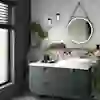Share:
As more of us look to conserve our water usage and save money in the process, the bathroom is an ideal place to turn our attention. In a room responsible for more than two-thirds of our water usage, water savings made in the bathroom can have a substantial impact. This is especially so for those homes that are on a water meter.
Here The Bathroom Showroom offers several tips to help you reduce your water usage in the bathroom. With such actionable advice, you can look to cut your water bills, while doing your part to help the planet.
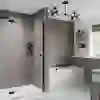
Five Ways to Save Water in the Bathroom
1. Take More Showers Than Baths
Though many of us love our baths, on average it takes around 180 litres of water to fill the tub. However, if this is one luxury you’re determined not to give up, and understandably so, there are a few compromises.
By filling your bath halfway, which many people prefer to do, you’ll be using around 100 litres of water instead, making an instant 80 litre saving. Then, if you opt for a long relaxing soak in the tub once a week, you can replace the rest of your baths with showers instead.
This will make your bath session the penultimate me-time that you can look forward to each week knowing that you’ve saved both money and water throughout the rest of the week!
If you’ve got younger members of the home who are quickly outgrowing the bathtub, why not take this time to help them transition from bath to shower? This is also a fabulous opportunity to encourage them to play a part in saving water in the bathroom.
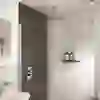
2. Keep Your Showers Short
Many of us find ourselves drifting away in the shower and spending around as much as 10 to 20 minutes in it each time. When you multiply this by several days, and indeed several household members all doing the same thing, you’re looking at a vast amount of hours per week spent dawdling in the shower!
But, by being aware of time here, and working to actively reduce this to four or five minutes per session, you can still enjoy the experience and keep clean - but all the while saving a lot more water. Making a change here is more about creating a repetitive habit and it will take a little getting used to. But, once you’ve implemented this, it will become effortless.
A great way to start is to keep a timer next to the shower as a visual reminder. This is especially beneficial and a fun idea for those younger members of the home who perhaps haven’t grasped the concept of time and money just yet!
Better still, add a Bluetooth lighting option to your bathroom, like the Hib Rhythm, and play some music as you shower. With the average length of a pop song just three to five minutes long, there’s no reason why shorter showers can't be fun showers!
3. Ensure Your Shower is Efficient
There’s nothing worse than actively choosing showers over baths and reducing your sessions, only to realise that your shower is an old and inefficient model. The likelihood is this set-up will be responsible for ongoing water loss.
So, now’s a great time to look at the shower set-up you have and make sure it’s the most energy-efficient of choices. If it’s not, it’s worth making a small investment here for long-term water savings.
A superb shower choice, like the Aqualisa Quartz Classic, will ensure you aren't wasting water by waiting too long for it to reach its desired temperature. The Aqualisa is thermostatically controlled. Yet, its most astounding feature offers an eco mode function. This is an optional mode on the smart valve that can help you save up to 33% of water.
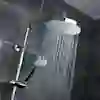
The Grohe Grohtherm 1000 Performance shower also boasts an EcoJoy function that helps you to reduce water and energy consumption.
If your shower is in good working order but you’re struggling with coverage and flow, you can also look at just changing your showerhead for improved performance. The Methven Aurajet Aio Handset is an optimal coverage shower head with a unique and award-winning design that saves you both water and energy. Featuring patented Aurajet technology, it delivers 20% more spray force and two times the amount of skin contact.
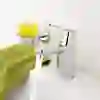
4. Pay Attention to Your Taps
Though taps that drip may seem like a minor irritation, when left unchecked just one leaky tap is responsible for a staggering loss of 5,500 litres of water each year!
For many, leaky taps can be fixed in minutes with a simple washer! Providing a water-tight seal, tap washers cost just a couple of pounds but will save you hundreds more each year. They’re also the easiest solutions to fix as a DIY task.
Taps from the iflo Reno, iflo Waterscade, iflo Astria, and iflo Garda range all offer Eco-Click water-saving features if you’re looking to replace your current taps. It’s also worth considering taps that feature Cold Start Technology, like the Roca Ona. This is afabulous example of an energy-saving tap as it’s designed specifically to avoid the unnecessary use of hot water.
Likewise, how your household uses your bathroom taps once they're in peak condition can also prevent water wastage. For a simple task such as brushing your teeth, you can potentially lose up to six litres per minute if you keep the tap running. So by just one person brushing their teeth a minimum of twice a day for three minutes each session, you’re looking at a loss of around 252 litres a week minimum - and that’s before you take into account others in the home doing the same!
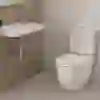
5. Keep Your Toilet Functioning Well
Finally, our toilets are also potentially water and money savers! Better still, our tip for the toilet is completely free! Firstly, most water companies will supply you with a free Cistern Displacement Device (CDD). A straight-forward device, a CDD can be easily placed into your toilet cistern and left to work its magic each time you flush the toilet.
CDDs are ideal for those toilets without a dual-flush system as they make them more energy efficient. These ingenious devices can help you save around one litre of water each time you flush, meaning a potential annual saving of 5000 litres!
Finally, consider placing a small bin next to the toilet and ensuring that all household members use this, not the toilet for disposing of rubbish. Unfortunately, toilet blockages are common occurrences and can play havoc with the amount of water used to resolve them. The biggest culprits here are wipes, cotton wool balls, and even disposable nappies. For this reason, it’s worth remembering the 3 P Rule. That is, only poo, pee, and paper can be flushed down the toilet!
For further help and advice on water saving in the bathroom, book an appointment with The Bathroom Showroom. Experts in all things bathrooms, we can help turn your dream bathroom into a reality.
